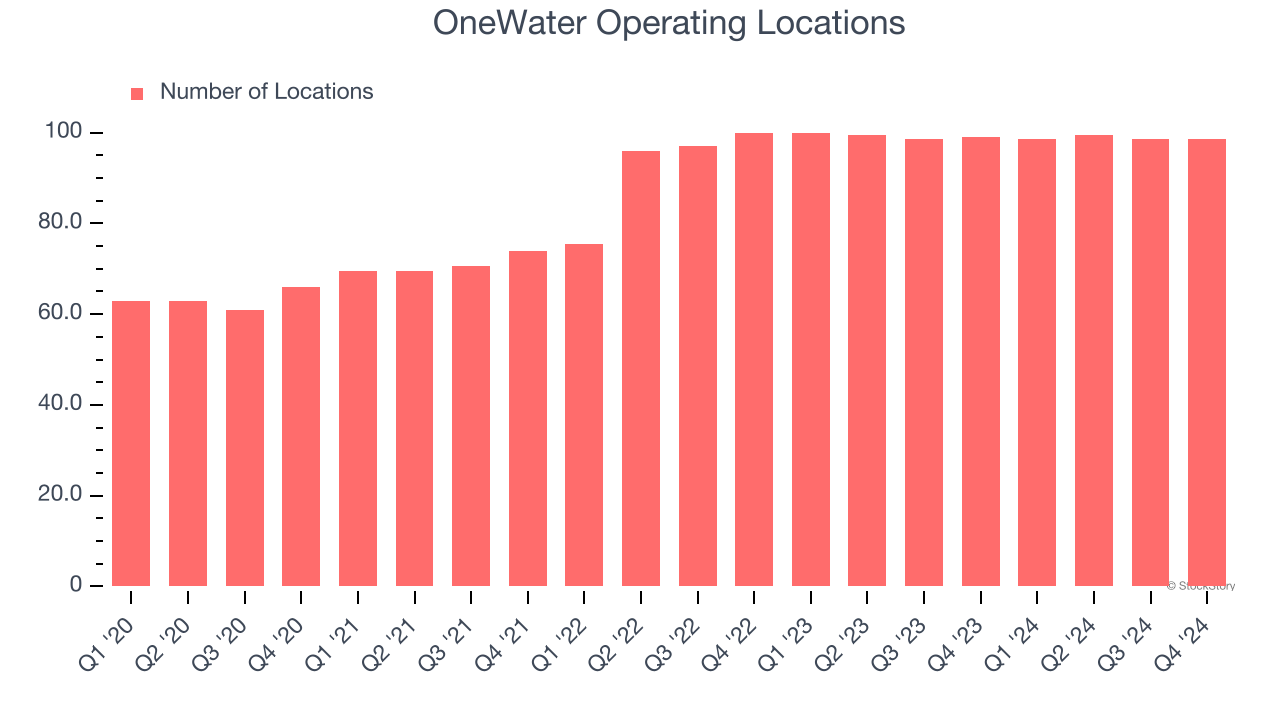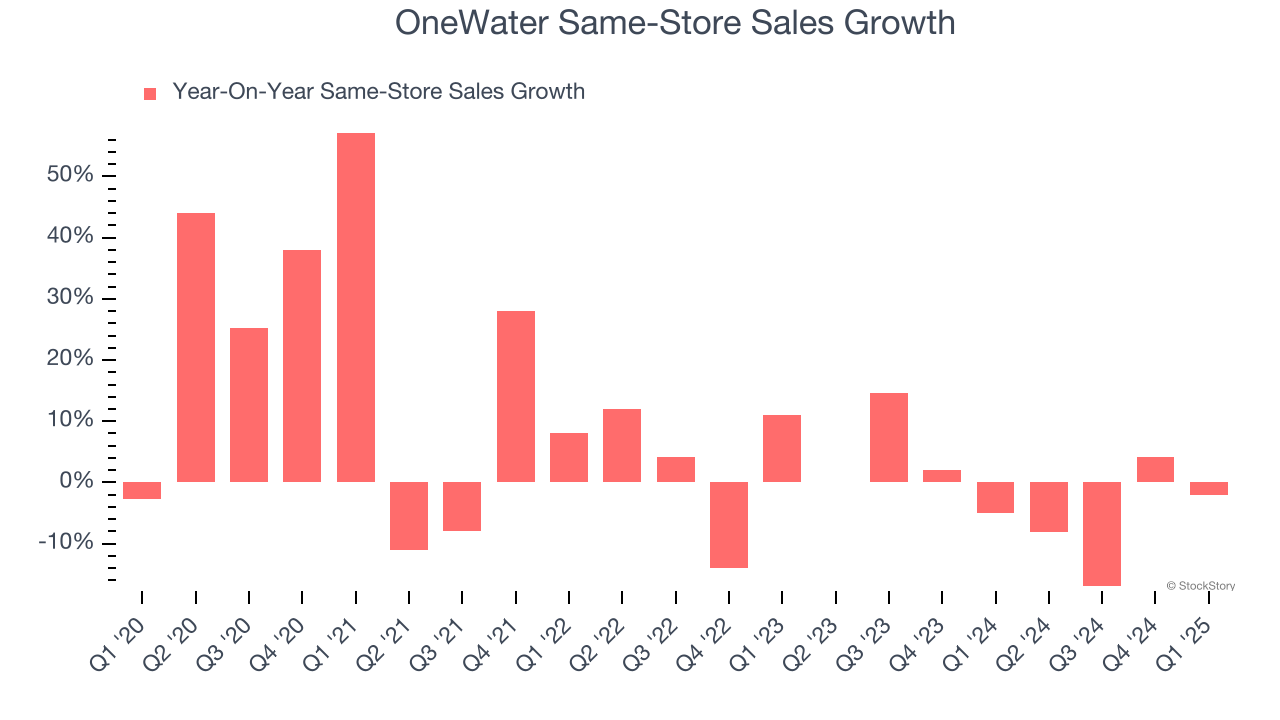
Boat and marine products retailer OneWater Marine (NASDAQ:ONEW) fell short of the market’s revenue expectations in Q1 CY2025, with sales flat year on year at $483.5 million. The company’s full-year revenue guidance of $1.75 billion at the midpoint came in 3.8% below analysts’ estimates. Its non-GAAP profit of $0.13 per share was 61.2% below analysts’ consensus estimates.
Is now the time to buy OneWater? Find out by accessing our full research report, it’s free.
OneWater (ONEW) Q1 CY2025 Highlights:
- Revenue: $483.5 million vs analyst estimates of $497.5 million (flat year on year, 2.8% miss)
- Adjusted EPS: $0.13 vs analyst expectations of $0.34 (61.2% miss)
- Adjusted EBITDA: $17.86 million vs analyst estimates of $23.3 million (3.7% margin, 23.4% miss)
- The company dropped its revenue guidance for the full year to $1.75 billion at the midpoint from $1.78 billion, a 1.4% decrease
- Management lowered its full-year Adjusted EPS guidance to $1 at the midpoint, a 33.3% decrease
- EBITDA guidance for the full year is $80 million at the midpoint, below analyst estimates of $88.97 million
- Operating Margin: 3.4%, in line with the same quarter last year
- Same-Store Sales fell 2% year on year (-5% in the same quarter last year)
- Market Capitalization: $240.6 million
“Our teams executed well in a challenging environment. Same store sales decreased 2%, driven primarily by lower sales in the West Coast of Florida which is still recovering from Hurricanes Helene and Milton,” commented Austin Singleton, Chief Executive Officer at OneWater.
Company Overview
A public company since early 2020, OneWater Marine (NASDAQ:ONEW) sells boats, yachts, and other marine products.
Sales Growth
Reviewing a company’s long-term sales performance reveals insights into its quality. Any business can have short-term success, but a top-tier one grows for years.
With $1.78 billion in revenue over the past 12 months, OneWater is a small retailer, which sometimes brings disadvantages compared to larger competitors benefiting from economies of scale and negotiating leverage with suppliers. On the bright side, it can grow faster because it has more white space to build new stores.
As you can see below, OneWater’s sales grew at an excellent 17.8% compounded annual growth rate over the last six years (we compare to 2019 to normalize for COVID-19 impacts) despite not opening many new stores.

This quarter, OneWater missed Wall Street’s estimates and reported a rather uninspiring 1% year-on-year revenue decline, generating $483.5 million of revenue.
Looking ahead, sell-side analysts expect revenue to grow 4% over the next 12 months, a deceleration versus the last six years. Still, this projection is above average for the sector and indicates the market is forecasting some success for its newer products.
Today’s young investors won’t have read the timeless lessons in Gorilla Game: Picking Winners In High Technology because it was written more than 20 years ago when Microsoft and Apple were first establishing their supremacy. But if we apply the same principles, then enterprise software stocks leveraging their own generative AI capabilities may well be the Gorillas of the future. So, in that spirit, we are excited to present our Special Free Report on a profitable, fast-growing enterprise software stock that is already riding the automation wave and looking to catch the generative AI next.
Store Performance
Number of Stores
A retailer’s store count influences how much it can sell and how quickly revenue can grow.
OneWater has kept its store count flat over the last two years while other consumer retail businesses have opted for growth.
When a retailer keeps its store footprint steady, it usually means demand is stable and it’s focusing on operational efficiency to increase profitability.
Note that OneWater reports its store count intermittently, so some data points are missing in the chart below.

Same-Store Sales
A company's store base only paints one part of the picture. When demand is high, it makes sense to open more. But when demand is low, it’s prudent to close some locations and use the money in other ways. Same-store sales provides a deeper understanding of this issue because it measures organic growth at brick-and-mortar shops for at least a year.
OneWater’s demand has been shrinking over the last two years as its same-store sales have averaged 1.4% annual declines. This performance isn’t ideal, and we’d be concerned if OneWater starts opening new stores to artificially boost revenue growth.

In the latest quarter, OneWater’s same-store sales fell by 2% year on year. This performance was more or less in line with its historical levels.
Key Takeaways from OneWater’s Q1 Results
We struggled to find many positives in these results. Quarterly results missed across the board, and the company lowered full-year guidance. The stock traded down 18% to $12.30 immediately following the results.
OneWater underperformed this quarter, but does that create an opportunity to invest right now? The latest quarter does matter, but not nearly as much as longer-term fundamentals and valuation, when deciding if the stock is a buy. We cover that in our actionable full research report which you can read here, it’s free.
